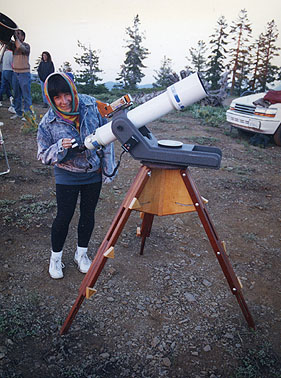Observational Astronomy at the Sierra Nevada Field Campus of San Francisco State University
Sunday July 28, to Thursday (evening) August 1, 2019
Nestled within the Gold Lakes region of the Sierra, just 50 miles north of Lake Tahoe, and about 80 miles west of Reno, Nevada is a wonderful institution of higher learning and environmental education: The Sierra Nevada Field Campus of San Francisco State University. Open to all adults, individual college-level classes are taught on a variety of subjects (see links below), all uniquely suited to this pristine environment.
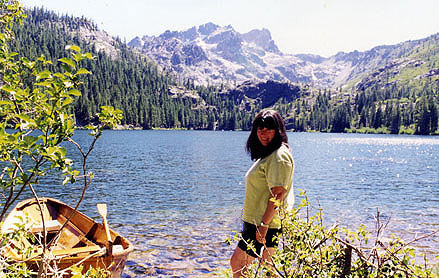
This lovely lake is 1.5 miles from campus.
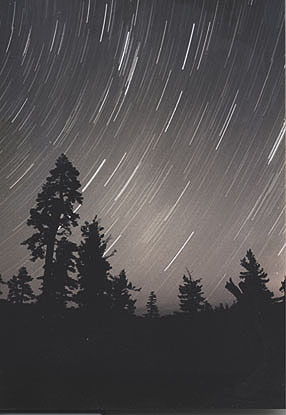
Practical Observational Astronomy from the Sierra Nevada is one such week-long course: Consisting of afternoon lectures/workshops, the real heart of this class is nighttime observational astronomy; which means using telescopes, star-maps, and other apparatus atop a 7200' peak far from city lights. Telescopes are provided (usually at least three 18" Newtonian reflectors), but students are certainly encouraged to bring their own equipment. (This class was originally designed to accelerate the learning curve of those with new astronomy equipment.) I have also been known to loan my 13" scope to students flying into Reno from out-of-state.
Typical assignments include:
-
Bright stars and Constellation identification.
-
Planisphere and star-map exercises.
-
Magnitude estimates, including: (variable star) Delta Cephei observations.
-
Making and using an observing list.
-
Hands-on use of various telescopes, mounts, and accessories.
-
Eyepiece sketches; written descriptions.
-
The Final: 'Man' a telescope the final night during a well-attended star party open to locals and campers!
The class can be taken for credit and grade (this usually fulfills the physics/laboratory requirement at most universities); the class is also open to auditors (no grade). Anyone with an interest in astronomy is encouraged to attend, even "advanced" amateurs--how better to share your wealth of knowledge?
Want to dabble at astrophotography? This is encouraged, too, though you will have to supply the necessary equipment: From the simple star-trails photo at left, to the more complex CCD or film imaging of advanced amateurs, all have been done successfully at this dark, transparent site.
- What exactly are these deep-sky objects, and how do we know this?
- The magnitude system (apparent, absolute. . .)
- Apparent sky movement; Right Ascension and Declination; use of Planisphere and star maps.
- A moon phase exercise.
- Spectrographic theory and (hands-on) use.
- Definition of astronomical terms.
- Optical theory and ray-tracing.
- Meteors/meteoroids/meteorites.
- Cosmology.
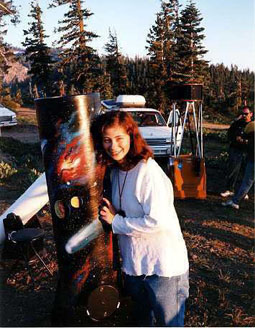
A happy student.
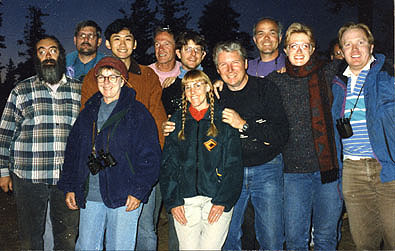
A group class shot.
Where:
- SFSU Field Campus (map)
- Please note: This is a mountain environment--please bring appropriate clothing, sleeping gear, insect repellent, red-filtered and white flashlights. . .
When:
- One week in July or August near the new moon. This year: Sunday July 28, to Thursday evening August 1. Class starts on Sunday afternoon and ends Thursday evening / Friday morning.
Official class description from SFSU Field Campus' Webpage.
Astroclass 2019 PDF format handout
Accommodations (also from the SFSU Field Campus' Webpage)
E-mail Registration and other course listings (do not dally; class can fill up!)
Instructor: Martin Sirk
Teacher's Aides: Ray Cash, Ira Stein, et al.
SFSU Field Campus Home Page
Former students' reviews:
Bill Cone's 2006 experience and observing report.
Kevin Daly's online review (scroll to the top).
Kevin's observing report--first night (again, scroll to the top).
